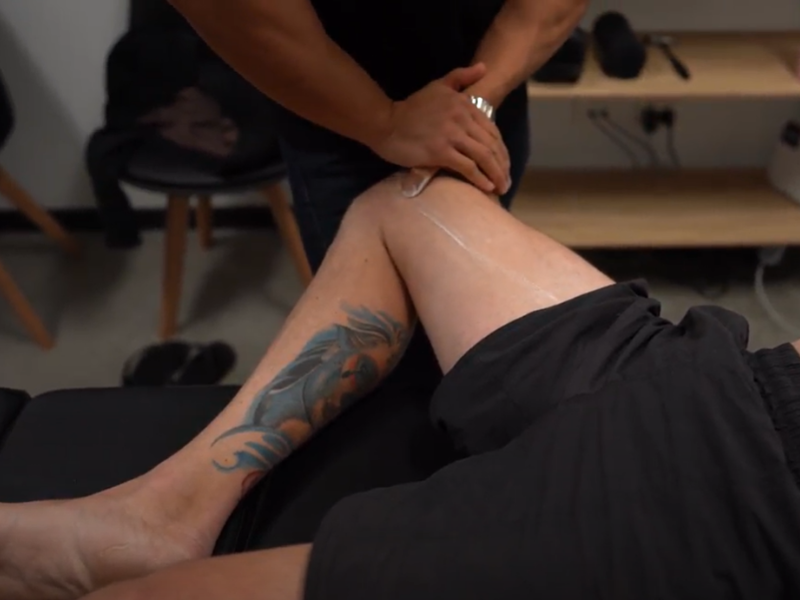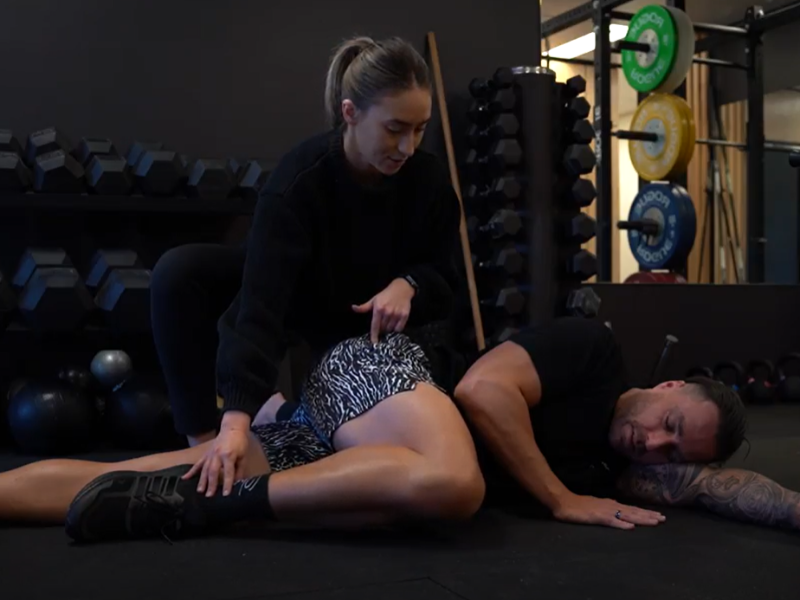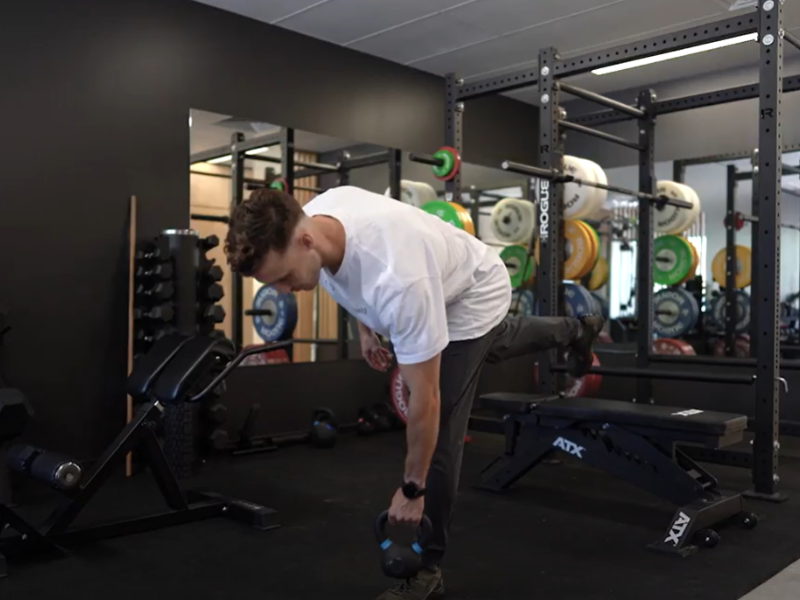
02 Mar Patellar Tendinitis
What is Patellar Tendinitis?
Patellar Tendinitis is a condition that is a result of the overuse and repetitive strain of your knee joint. It is more commonly known as ‘jumpers knee’ and is characterised by the inflammation of your Patellar tendon and knee pain. You may be familiar with term Patellar Tendonitis, which in the sports medicine world is the same thing as Patella Tendinitis, just with different spelling.

A tendon is a cord of sturdy, flexible tissue that connects your muscles to your bones and are all over your body. Your Patellar Tendon assists in preventing muscular damage by reducing the impact of physical activity like running and jumping, and sports like basketball, netball, volleyball, and soccer have on your muscles. Your Patellar Tendon has a high tear resistance but is not elastic, this means that it is prone to injury when stressed, can cause pain in the knee joint, knee cap and shin bone, and may take quite some time to heal without effective sports physical therapy.
Your Patellar tendon is a connection point of your Patellar (knee cap) and your Tibia (shin bone). Your Patellar tendon works with your quadriceps to extend your knee, in order to carry out gross movements such as running, jumping, and kicking. Gross movements are movements that involve physical activity from the large muscle groups in your arms, legs and torso. So, for runners, jumpers, kickers and sports people this involves high amounts of physical activity from the quadricep muscles and calf muscles.

What Causes Patellar Tendinitis?
Patellar Tendinitis, an overuse injury, is caused by repeated stress on the knee, resulting in tiny tears along the tendon. The body attempts to repair these tears at first but as the condition worsens and muscle imbalance kicks in, the tears increase in number and severity, they cause pain and inflammation to occur as high as the hip and all the way down to the shin bone as the tendon weakens.
This injury is common amongst people who play sport and professional athletes, whose jobs frequently involve running and jumping on hard surfaces. It is extrememly common to see this type of tendon issue amongst basketball players, volleyball players, netballers etc. Patellar Tendinitis is not exclusive to sports enthusiasts, there are many potential risk factors to look out for that can be associated with this knee injury, risk factors such as:
- Tightness in your quadriceps, hamstrings and calf muscles which can be caused from repetitive stress.
- Muscle imbalance for people who are, or are not physically active. If certain muscles in your legs, like your quadriceps muscle and calf muscles are more dominant than others, the stronger muscles could pull harder on your patellar tendon, increasing the risk of a knee injury and tendon pain.
- A symptom of some chronic illnesses is blood flow disruption. This may restrict blood flow to the knee, causing the tendon to weaken. Illnesses such as Lupus, Kidney failure, Rheumatoid Arthritis, and Diabetes can aid in weakening your tendons and result in patellar tendonitis.

What Does Patellar Tendinitis Pain Feel Like?
At first, you might feel pain in your knee only, mainly in the knee cap when you start participating in physical activity, or right after intense exercise. Over time, the pain might escalate and begin to interfere with engaging in sports or any kind of physical exertion that puts repetitive stress on your lower body. Eventually, the pain will start to interfere with daily activities and movement such as going up the stairs, kneeling on the ground to play with the kids, or even getting up from a chair.
Some signs and symptoms to look out for include:
- Tenderness and pain in the knee region
- Swelling and inflammation
- Pain in your knee when running, walking, or jumping
- Pain when bending and straightening your leg
- Tenderness behind the lower part of your kneecap

Patellar Tendinitis Pain Location
Jumpers knee pain isn’t always just in the knee. Patellar tendon damage may cause pain to run down your shin bone (Tibia) or up your quadriceps muscles. When inflammation occurs in these areas, this may cause secondary pain in other muscle groups or tendons and increase the risk of injury.
If you have knee pain now, or pain in your muscles, you may be standing, sitting and moving in a different way to either compensate or reduce the pressure on the injured areas. This muscle imbalance may cause undesirable impacts on your hips, back or other tendons. This is why early diagnosis and treatment is essential and can potentially drastically reduce recovery time.

How To Treat Patella Tendinitis
When diagnosing Patellar Tendinitis, there are a series of scans and tests that our qualified clinicians will carry out. Diagnosing this issue might require various physical examinations to determine the right course of action. To get down to the root of the issue, we might send you in for X-Rays, ultrasounds, or even MRIs to properly confirm tendonitis before discussing your treatment plan with you.
Treatment options for Patellar Tendinitis might include:
- Cold compresses to reduce pain, tenderness and aid in reducing swelling and inflammation.
- Stretching lower body muscles to support the recovery of the Patellar tendon.
- Strengthening exercises, in particular eccentric focused exercises will support the rehabilitation of the tendon tissue.
- Knee taping, and patellar tendon strapping provides compression which slightly alters the angle of the tendon, reducing the strain.
At Beyond Health Chiropractic, we specialise in all of these knee injury treatments and are capable of assisting you and recommending an appropriate course of action for your treatment plan.

How To Prevent Jumpers Knee
While a Patellar tendon injury may be an occupational hazard for many sports people and athletes, there are a few ways you can reduce the likelihood of injury:
- Get stronger in Eccentric movements. A large portion of sports training is athletic, explosive and concentric. The push, jump, kick, etc. Eccentric movements focusing on the descent or the negative portion of the movement. Think focusing on the hamstrings and glutes for the pull back motion of a kick, or the quads and hamstrings for the descent of a jump. Strengthening these muscles will help your body handle the pressure and stress that normally would be on your tendons and joints.
- Focus on technique. Moving in a below optimal way can cause friction and stress on your muscles, joints and tendons. Seeing a trainer, sports chiropractor or body movement specialist is a small investment that can improve your performance and also reduce the risk (and cost) of future injuries.
- Don’t be a hero. As soon as you start to notice knee pain, or something not feeling right, make the call to sit the next set or half out. Are you really willing to risk an injury that may have you sitting out for weeks or months? The earlier you can get a professional assessment, the better! There may be simple treatments we can recommend that will keep you on the field and performing without the worry of a knee injury.

Our objective at Beyond Health is to treat every issue at its core, and prevent further injury, not just temporarily alleviate pain.
With our tailor-made exercise programs drawn up by our experienced chiropractors, we will help you stay on the field or have you back to playing your favourite sport in no time. Our chiropractors will walk you through exercises and stretches to strengthen your muscles within your knee, whilst showing you the correct and safe techniques to prevent further injury.
Here at Beyond Health, we prioritise patient safety and pride ourselves in educating our patients in proper techniques to help get them back on their feet. With our in-house gym area dedicated to doing just this, we are able to be more hands on with correcting techniques, giving our patients first hand examples of how to properly perform exercises.

If you are struggling with knee pain, come on down to any of our three locations around Perth located in Applecross, Myaree, and Nollamara. You can make an appointment with any of our qualified chiropractors by booking online or simply calling us at (08) 6311 7646.






דירות דיסקרטיות בטבריה
Posted at 22:15h, 23 AprilI want to to thank you for this very good read!! I certainly enjoyed every little bit of it. I have got you book-marked to check out new stuff you postÖ